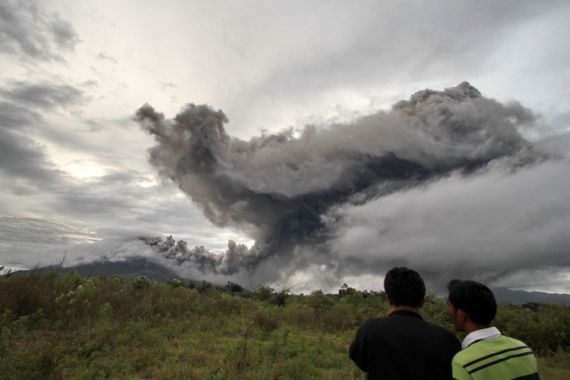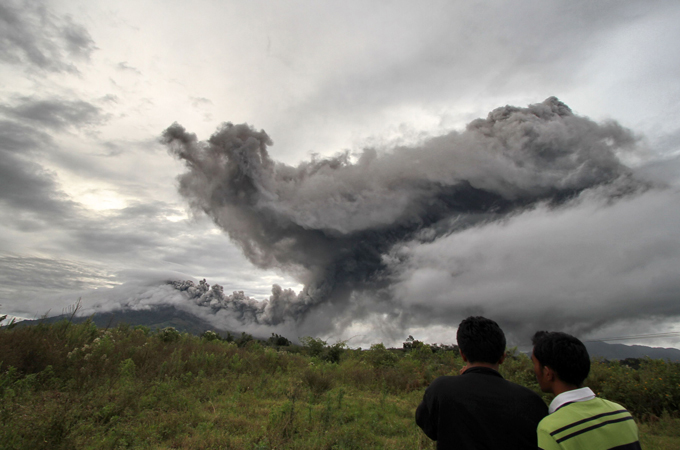Indonesian volcano erupts again
Force of Mount Sinabung’s explosion felt miles away as four centuries of dormancy come to an end.

 |
| Mount Sinabung’s eruption marks the end of four centuries of dormancy of this North Sumatra volcano [AFP] |
An Indonesian volcano has erupted yet again, sending black ash half a kilometre into the air – its most powerful eruption since coming back to life after four centuries of dormancy.
The force of Mount Sinabung’s explosion on Tuesday could be felt 8km away.
Keep reading
list of 4 itemsAfter the Hurricane
World’s coral reefs face global bleaching crisis
Why is Germany maintaining economic ties with China?
“This one was really terrifying,” Anissa Siregar, a local resident, told the Associated Press news agency, as she and her two children arrived by lorry at an emergency shelter near the base,
“It just keeps getting worse.”
Siregar said the whole mountain shook violently for at least three minutes.
The volcano in North Sumatra province erupted last week for the first time since 1600, one of around 129 active volcanoes local vulcanologists are watching.
The eruption occurred just after midnight during a torrential downpour.
Ash and mud flow
Witnesses said volcanic ash and mud flowed down the mountain’s slopes, flooding into abandoned homes.
There were more than 80 volcanic earthquakes in the 24-hour lead-up to the blast, compared to 50 on Friday, when ash and debris shot nearly 3,000m into the air.
More than 30,000 people living along the volcano’s fertile slopes have been relocated to cramped refugee camps, mosques and churches in nearby villages.
But some have insisted on returning to the danger zone to check on their homes and their dust covered crops.
The government sent lorries to the mountain before Tuesday’s eruption to help carry them back to safety.
Right of Fire
Indonesia is a seismically charged region because of its location on the so-called Ring of Fire – a series of fault lines stretching from the Western Hemisphere through Japan and Southeast Asia.
It has recorded some of the largest eruptions in history.
The 1815 explosion of Mount Tambora buried the inhabitants of Sumbawa Island under searing ash, gas and rock, killing an estimated 88,000 people.
The 1883 eruption of Krakatoa could be heard 3,200km away and blackened skies across the region for months.
At least 36,000 people were killed in the blast and the tsunami that followed.